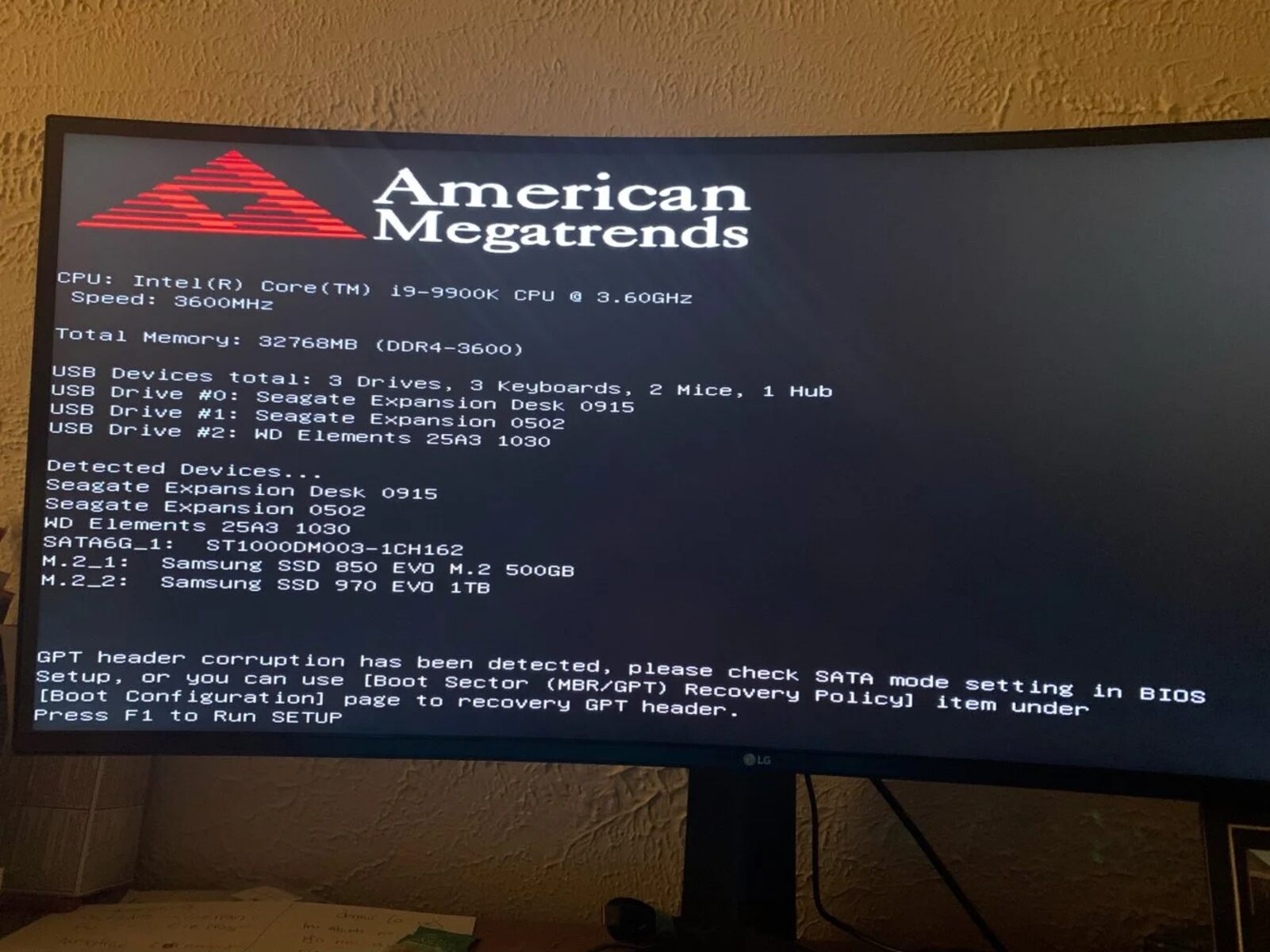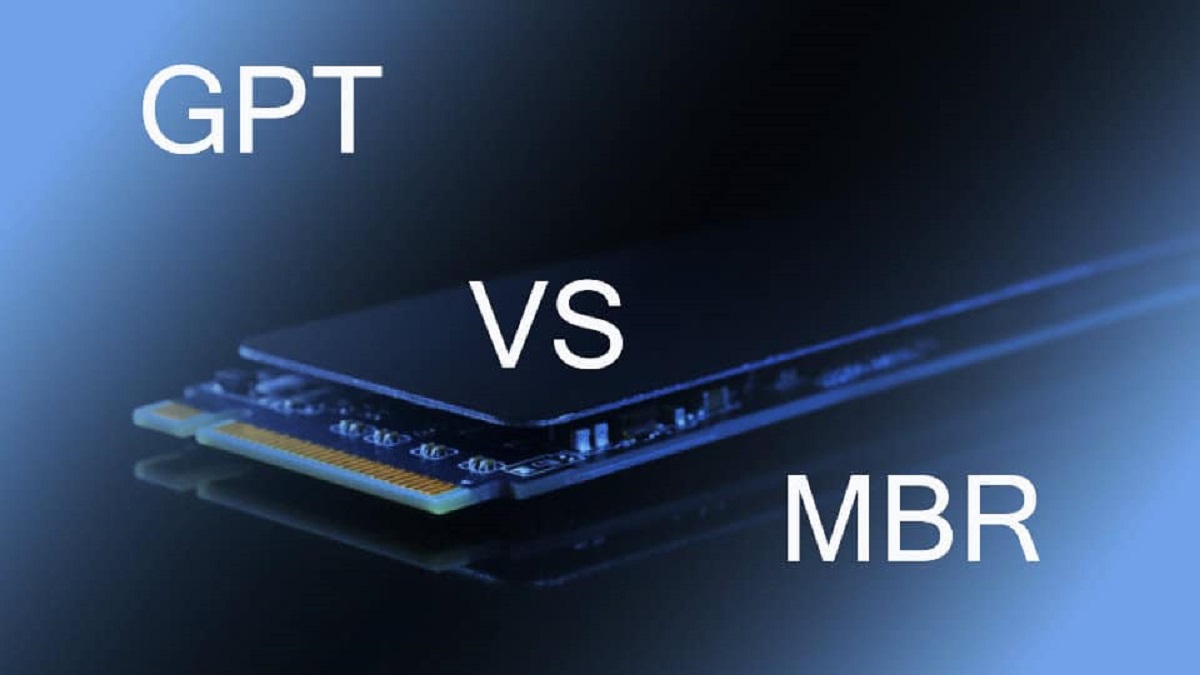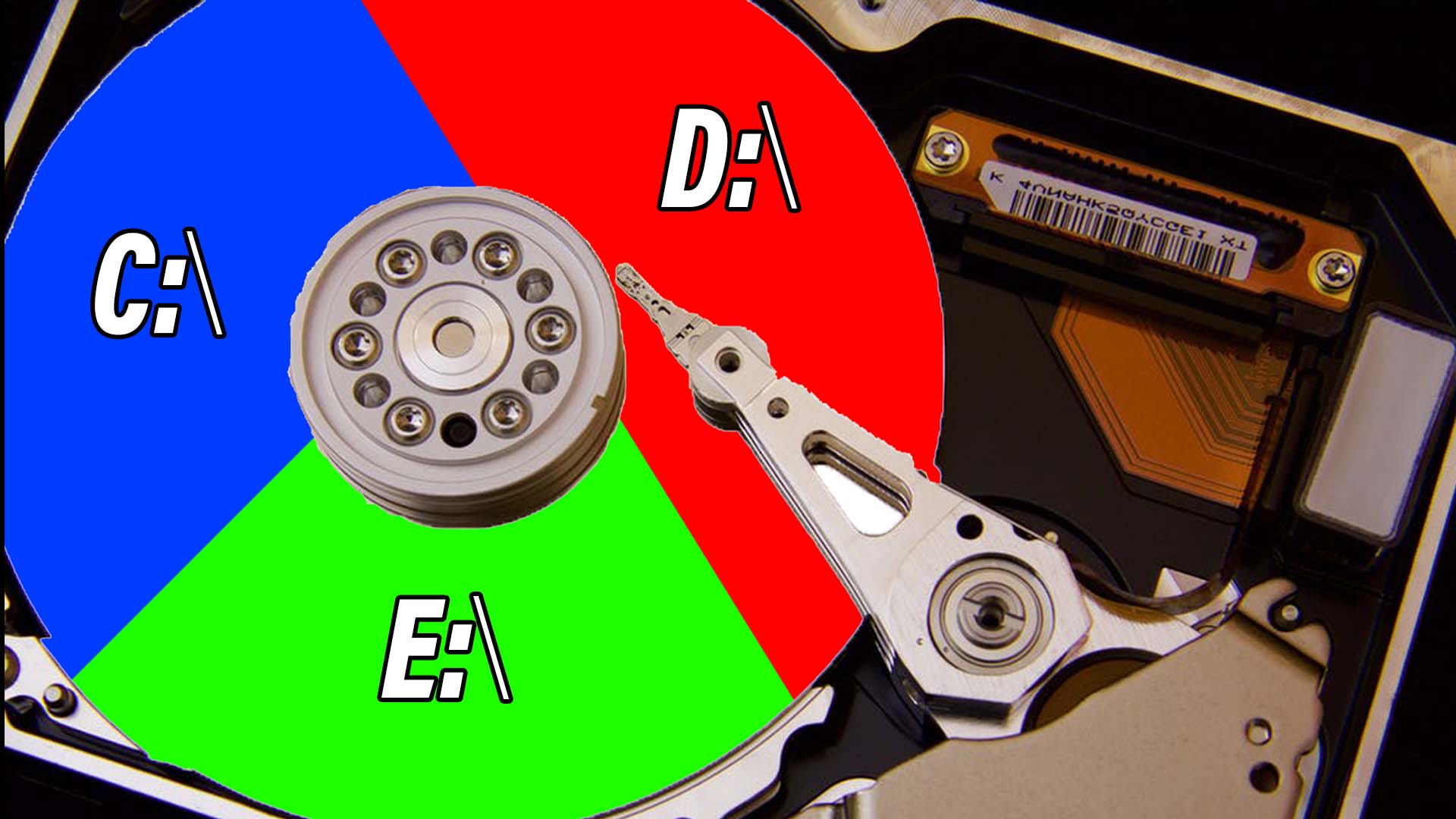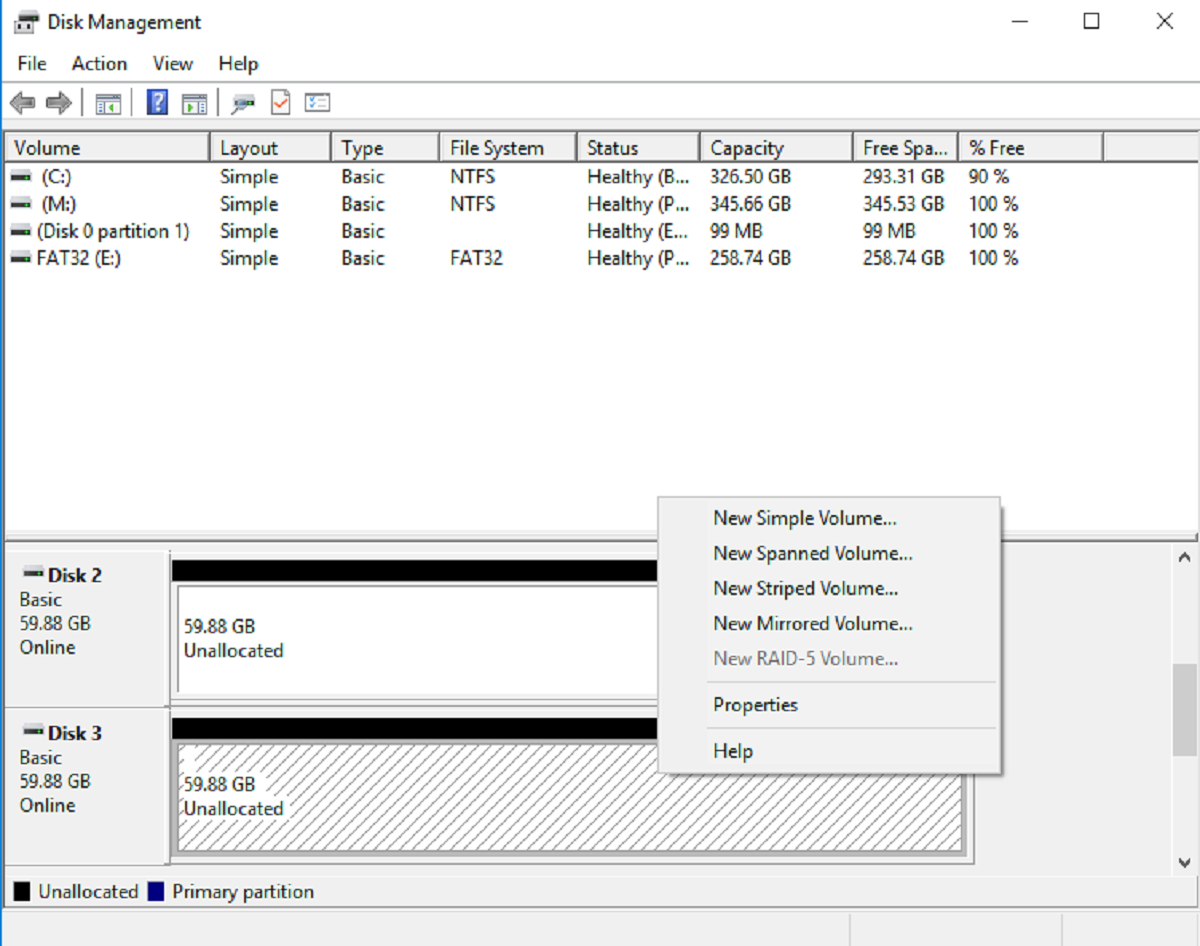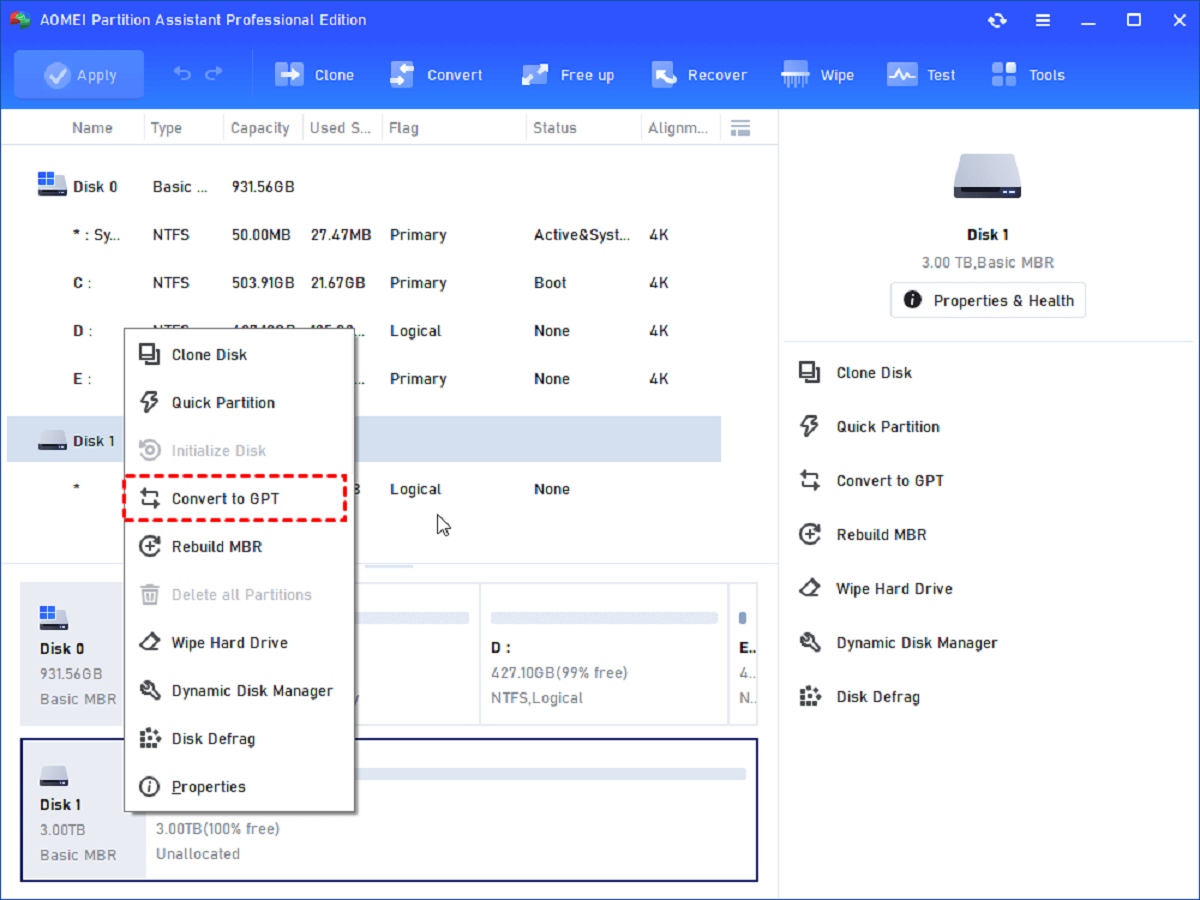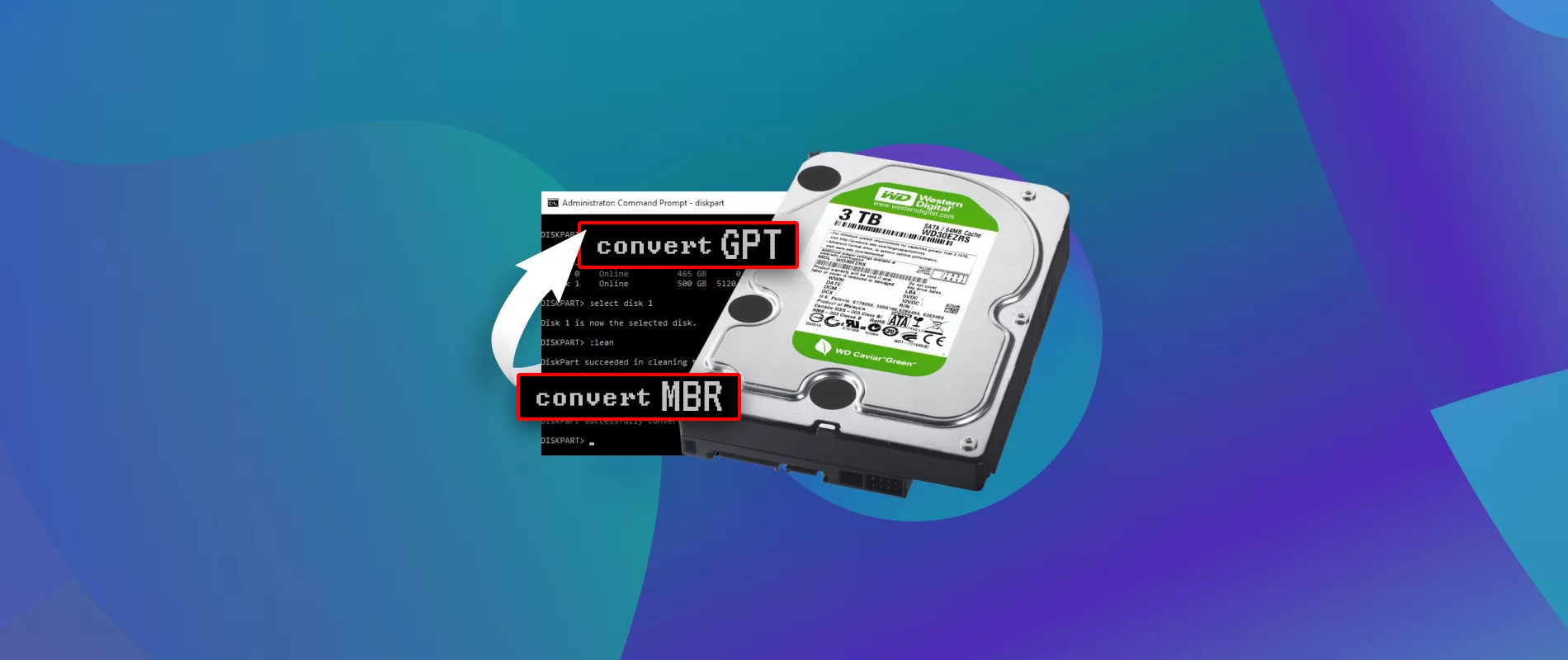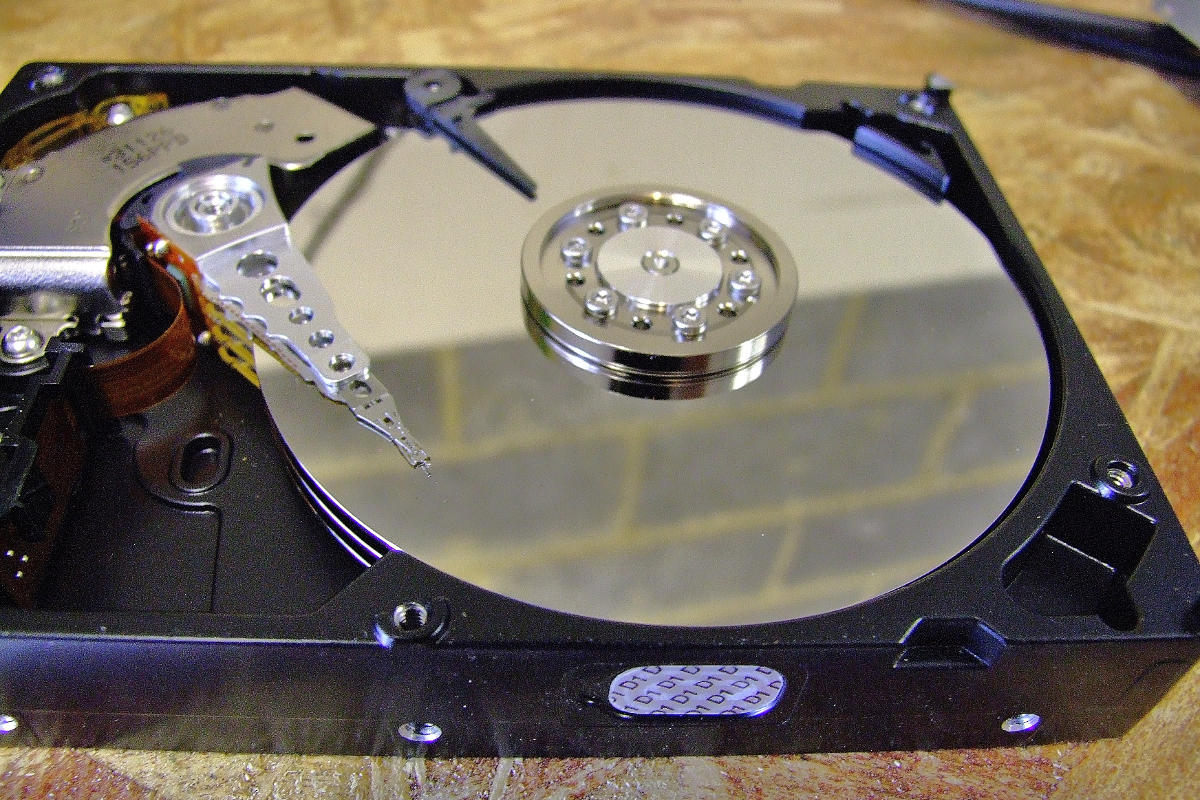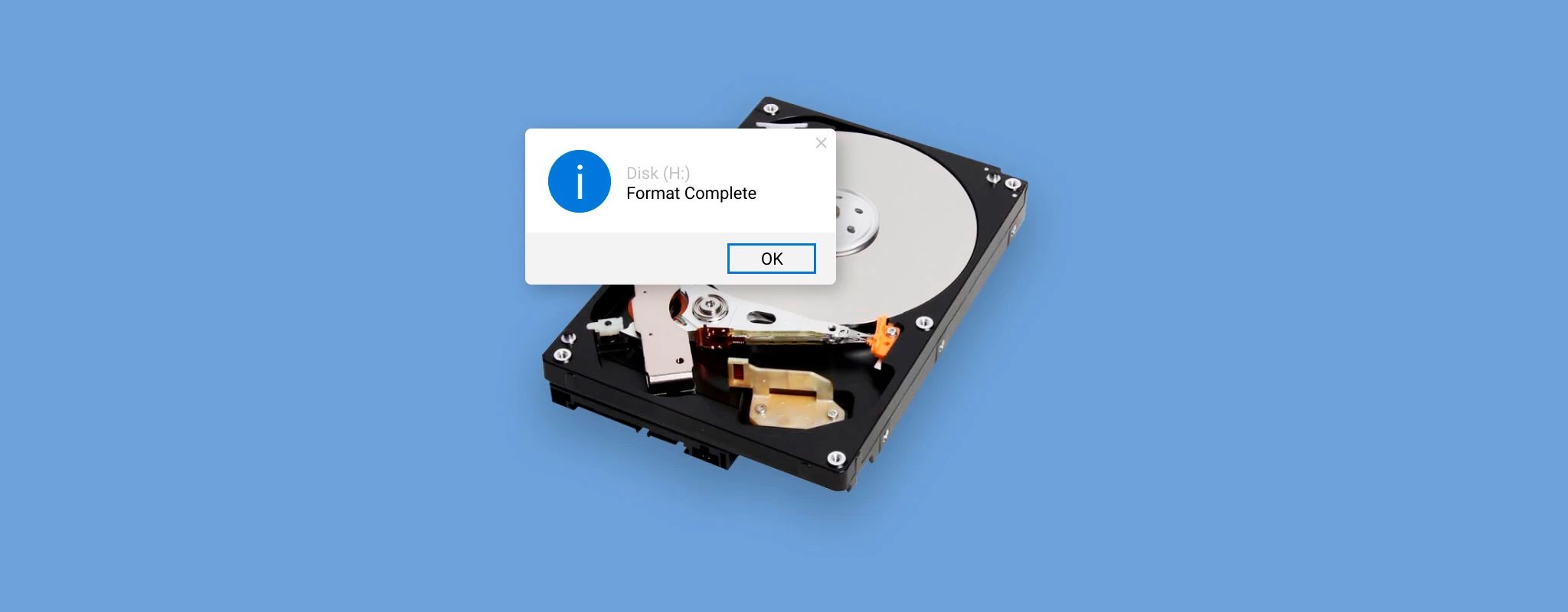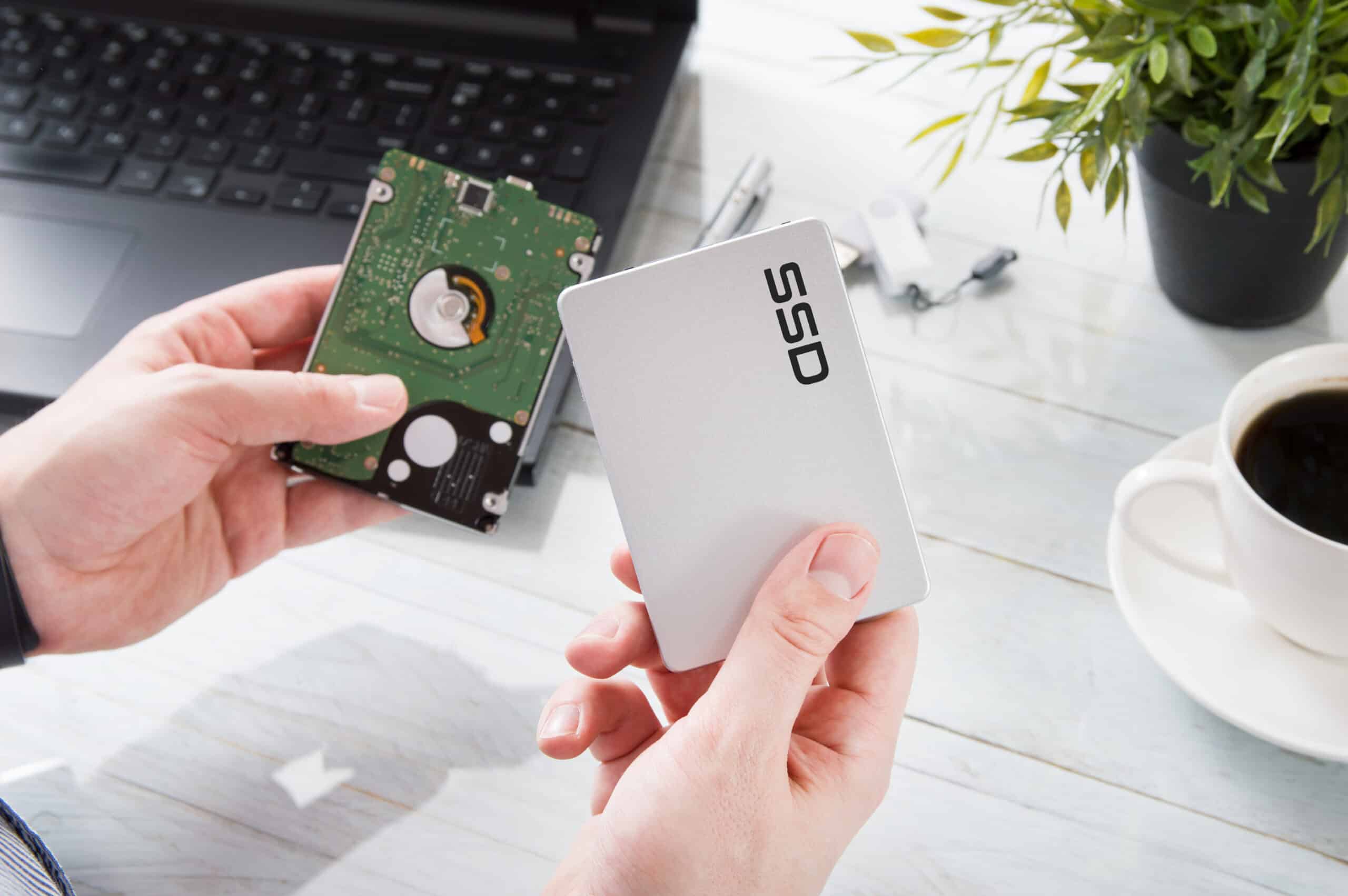Possible Symptoms of MBR/GPT Corruption in a Workstation
When the Master Boot Record (MBR) or GUID Partition Table (GPT) of a workstation becomes corrupted, it can lead to various noticeable symptoms. These symptoms can vary in severity and can greatly impact the performance and functionality of the system. Being aware of these symptoms is crucial in diagnosing and resolving MBR/GPT corruption issues. Here are two possible symptoms to watch out for:
1. Blue Screen of Death (BSOD)
One of the most common indications of MBR/GPT corruption is encountering the infamous Blue Screen of Death (BSOD). The BSOD usually occurs during the boot process and displays an error message accompanied by a blue screen. The error message may mention MBR or GPT-related issues, such as a missing or corrupt boot sector. This signifies that the system is unable to start up properly and often requires troubleshooting to restore normal functionality.
2. Inability to Boot the Operating System
When the MBR or GPT gets corrupted, it can prevent the system from booting up altogether. You may experience repeated boot loops or encounters with error messages indicating system failure. The corrupted MBR/GPT affects the system’s ability to locate the operating system’s boot files, rendering it unable to initiate the startup process. In such cases, the workstation may display messages like “Operating System Not Found” or “Invalid System Disk.” This symptom requires immediate attention to restore the ability to boot the operating system.
It is important to note that these two symptoms are not exhaustive, and MBR/GPT corruption can manifest in various ways depending on the severity of the issue. Other symptoms may include error messages indicating corrupt MBR or GPT, missing or inaccessible partitions, unusual system crashes or freezes, slow or lagging system performance, issues with file system integrity, failure to recognize or detect hard drives, strange or unexpected system behavior, difficulty accessing BIOS or UEFI settings, and even data loss or corruption.
If you encounter any of these symptoms, it is advisable to seek professional assistance or attempt to troubleshoot the issue with appropriate tools and guides available online. Addressing MBR/GPT corruption promptly can help prevent further damage to the system and ensure smooth operation.
Blue Screen of Death (BSOD)
One of the most alarming symptoms of MBR or GPT corruption in a workstation is encountering the dreaded Blue Screen of Death (BSOD). The BSOD is a screen that appears when the operating system encounters a critical error that it cannot recover from. This error is often related to MBR or GPT corruption, and it can be accompanied by an error message or a stop code.
When the MBR or GPT becomes corrupted, it can disrupt the normal boot process of the operating system. As a result, the system may crash and present the BSOD, causing frustration and potentially losing unsaved work.
Possible Causes of BSOD
There are several factors that can lead to MBR or GPT corruption and trigger the BSOD. Some of the possible causes include:
- Malware or Virus Infection: Malicious software or viruses can infect the MBR or GPT, causing corruption and leading to system crashes.
- Hardware or Software Conflicts: Incompatible or faulty hardware drivers, firmware, or software can interfere with the MBR or GPT, resulting in corruption and subsequent BSOD.
- Power Outages or Improper Shutdowns: Abrupt power outages or improper system shutdowns can cause damage to the MBR or GPT, leading to corruption and triggering the BSOD.
- Disk Errors: Issues with the hard disk, such as bad sectors or disk errors, can affect the MBR or GPT and result in corruption, eventually leading to the BSOD.
How to Resolve BSOD
Resolving the BSOD caused by MBR or GPT corruption often requires advanced troubleshooting and repair techniques. Here are some steps you can take to address the issue:
- Run System Repair Tools: Most operating systems provide built-in tools to repair MBR or GPT-related issues. Running these tools, such as the Startup Repair feature, can help fix the corrupted MBR or GPT and resolve BSOD errors.
- Update Drivers and Firmware: Outdated or incompatible drivers and firmware can contribute to MBR or GPT corruption. Updating these components to the latest versions can often resolve BSOD issues.
- Perform a System Restore: If the BSOD started occurring after a recent software or driver installation, performing a system restore to a previous restore point can revert the changes and fix the issue.
- Scan for Malware: Running a thorough malware scan using a reputable antivirus program can help identify and remove any infections that may have caused MBR or GPT corruption.
- Consult a Professional: If the above steps do not resolve the BSOD, it is recommended to seek assistance from a professional technician who specializes in computer repairs.
Dealing with the Blue Screen of Death can be a frustrating experience, but by taking appropriate steps and seeking assistance when needed, you can overcome MBR or GPT corruption and restore the stability of your workstation.
Inability to Boot the Operating System
Another prominent symptom of MBR or GPT corruption in a workstation is the inability to boot the operating system. When the MBR or GPT gets corrupted, it can disrupt the system’s ability to locate and load the necessary files to initiate the startup process. This can result in various error messages and repetitive boot loops, preventing the operating system from successfully starting up.
Possible Error Messages
When the MBR or GPT is corrupted, you may encounter error messages that indicate the system’s failure to boot. Some common error messages include:
- Operating System Not Found: This message signifies that the MBR or GPT corruption has caused the system to fail in detecting or locating the operating system.
- Invalid System Disk: This error message suggests that the system cannot find a valid boot device or that the MBR or GPT has been damaged, making the current device inaccessible for booting.
- NTLDR is Missing: The “NTLDR” (NT Loader) file is crucial for the boot process in Windows operating systems. If it is missing or corrupted due to MBR or GPT corruption, the system will fail to boot.
Resolving the Inability to Boot
When faced with the inability to boot the operating system due to MBR or GPT corruption, there are several steps you can take to resolve the issue:
- Use Startup Repair: Many operating systems provide a built-in Startup Repair tool that can automatically diagnose and repair boot-related issues. Running this tool can help fix the corrupted MBR or GPT, allowing the system to boot normally.
- Check Boot Order and BIOS Settings: Ensure that the boot order is correctly set in the BIOS or UEFI firmware. Make sure the hard drive with the operating system is set as the primary boot device and that any unnecessary external peripherals are disconnected.
- Perform Disk Check and Repair: Use disk utility software to check for errors and repair any issues with the hard drive. This can help fix potential disk-related problems that could be causing the inability to boot.
- Reinstall or Repair the Operating System: If all else fails, you may need to consider reinstalling or repairing the operating system. This should be done after backing up important data, as it may involve formatting the system partition and reinstalling the operating system from scratch.
- Seek Professional Help: If you’re not comfortable performing advanced troubleshooting steps or the issue persists, it’s advisable to seek assistance from a professional technician with expertise in resolving boot-related problems.
Remember, the inability to boot the operating system can be a frustrating experience, but with proper steps and assistance, you can resolve MBR or GPT corruption and get your workstation up and running again.
Error Messages indicating Corrupt MBR/GPT
When the Master Boot Record (MBR) or GUID Partition Table (GPT) of a workstation becomes corrupted, it often manifests through various error messages. These error messages serve as indicators of MBR/GPT corruption and can provide important insights into the underlying issue. Understanding these error messages is essential in diagnosing and resolving the problem effectively.
Possible Error Messages
Here are some common error messages that may indicate corrupt MBR/GPT:
- “Invalid system disk”: This error message typically appears when the system fails to find a valid bootable device due to MBR or GPT corruption. The error indicates that the MBR or GPT information is invalid or inaccessible.
- “NTLDR is missing”: The “NTLDR” (NT Loader) file is responsible for loading the operating system in Windows. If this file is missing or corrupt due to MBR/GPT corruption, the system cannot proceed with the boot process and displays this error message.
- “Bootmgr is missing”: Similar to the “NTLDR” error, this message suggests that the Boot Manager file is either missing or corrupted. The Boot Manager is responsible for locating the operating system and initiating the boot process.
- “Invalid partition table”: When the partition table, either within the MBR or GPT, becomes corrupt, the system displays this error message. It indicates that the partition table is no longer recognized as valid, rendering the partitions inaccessible.
- “Disk read error occurred”: This error message typically appears when the system fails to read data from the storage device due to MBR or GPT corruption. It signifies that there might be problems with the boot sector or the partition table.
Resolving Error Messages
When encountering error messages indicating MBR/GPT corruption, here are some steps you can take to resolve the issue:
- Use System Repair Tools: Many operating systems provide built-in repair tools, such as Startup Repair. These tools can automatically diagnose and fix MBR/GPT-related issues, potentially resolving the error messages.
- Check Disk and Repair: Run disk utility software to scan and repair any disk-related errors or bad sectors. This can help resolve MBR/GPT corruption caused by disk issues.
- Rebuild MBR/GPT: Tools like the “bootrec” command in Windows or third-party partition management software can be used to rebuild the MBR or GPT. This process can restore the integrity of the boot structures and resolve the error messages.
- Restore from Backup: If you have a recent backup of the MBR or GPT, you can restore it to its previous state to fix the corruption. This is an effective solution if the backup includes a known good configuration.
- Seek Professional Help: If you’re unsure about performing advanced troubleshooting steps or the error messages persist, it’s advisable to reach out to a professional technician with expertise in dealing with MBR/GPT corruption.
Resolving error messages indicating corrupt MBR/GPT requires careful attention and appropriate actions. By taking the necessary steps, you can address the underlying problem and restore the stability and functionality of your workstation.
Missing or Inaccessible Partitions
One of the noticeable symptoms of MBR/GPT corruption in a workstation is the presence of missing or inaccessible partitions. The MBR or GUID Partition Table (GPT) provides information about the partitions on a hard drive, and when it becomes corrupted, it can result in the loss of visibility or accessibility to one or more partitions.
Possible Indications
The following indications may suggest that you are dealing with missing or inaccessible partitions:
- Partitions Not Visible: When you access disk management or file explorer, you may notice that one or more partitions are not displaying, indicating that they have become inaccessible due to MBR/GPT corruption.
- Drive Not Showing Up: In some cases, even the entire hard drive may not be visible or recognized by the operating system. This can occur if the MBR or GPT is severely corrupted.
- Error Messages: When trying to access a partition, you may receive error messages indicating that the partition is unreadable, inaccessible, or unrecognized. These errors can occur due to corrupted partition table entries.
- Data Loss: If a partition becomes completely inaccessible, you may experience data loss, as the files and folders stored in that partition will be inaccessible as well.
Resolving Missing or Inaccessible Partitions
Here are some steps to help resolve the issue of missing or inaccessible partitions caused by MBR/GPT corruption:
- Use Data Recovery Software: If the missing partitions contain important data, it is advisable to use data recovery software to attempt to retrieve the files. Such software can help restore data from inaccessible or lost partitions.
- Rebuild the Partition Table: Tools like “TestDisk” or “GParted” can be used to rebuild the partition table and restore the missing or inaccessible partitions. However, caution must be exercised when using these tools, as incorrect usage can lead to further data loss.
- Perform Disk Repair: Running disk repair tools, such as CHKDSK for Windows or fsck for Linux, can help fix file system errors and potential disk-related issues that could be causing the partitions to become inaccessible.
- Restore from Backup: If you have a recent backup of the affected partitions or the entire hard drive, you can restore the backup to recover the data and regain access to the partitions.
- Consult a Professional: If the above steps do not yield satisfactory results or you are unsure about performing advanced recovery operations, it is advisable to seek assistance from a professional data recovery service or technician with expertise in dealing with MBR/GPT corruption.
Dealing with missing or inaccessible partitions can be distressing, especially if valuable data is at stake. By following the appropriate steps and seeking professional help if needed, you can potentially restore the accessibility of the partitions and recover your important files.
Unusual System Crashes or Freezes
Unusual system crashes or freezes can be a significant symptom of MBR/GPT corruption in a workstation. When the MBR or GUID Partition Table (GPT) becomes corrupted, it can lead to instability in the operating system, causing the system to crash or freeze unexpectedly.
Possible Signs of Unusual System Crashes or Freezes
If your workstation experiences any of the following signs, it suggests that MBR/GPT corruption may be the underlying cause:
- Frequent System Crashes: Your workstation may crash frequently, either during the boot process or while running applications. These crashes can occur randomly and without any apparent reason.
- Unresponsive System: The system may become unresponsive, with the mouse cursor freezing on the screen and no response to keyboard inputs. This can happen while performing various tasks or even during idle periods.
- Unexpected Reboots: Your workstation may restart unexpectedly, without any prior indication or warning. This can happen during normal operation or after a system crash.
- Error Messages: System crashes or freezes may be accompanied by error messages indicating MBR or GPT-related issues, such as disk errors or boot sector corruption.
- Blinking Caps Lock/Num Lock: In some cases, the Caps Lock or Num Lock LED lights on the keyboard may start blinking, indicating a system crash or freeze.
Resolving Unusual System Crashes or Freezes
Here are some steps you can take to address the issue of unusual system crashes or freezes caused by MBR/GPT corruption:
- Run System Diagnostics: Use built-in system diagnostic tools to check for any hardware issues that might be contributing to the crashes or freezes. This can help identify if the problem is solely caused by MBR/GPT corruption or if there are additional underlying hardware problems.
- Scan for Malware: Perform a thorough scan for malware or viruses using reputable antivirus software. Malware infections can cause system instability and crashes, so it’s important to rule out any potential malware-related issues.
- Repair Disk Errors: Use disk utility software to scan and repair any disk errors or bad sectors that could be causing the system crashes or freezes. This can help resolve MBR/GPT corruption-related issues in the disk’s file structure.
- Restore from Backup: If you have a recent backup of your system, consider restoring it to a previous working state. This can help eliminate any MBR/GPT corruption that may have occurred in the recent past.
- Consult a Professional: If the system crashes or freezes persist, or if you are uncomfortable performing advanced troubleshooting steps, it is advisable to seek assistance from a professional technician who is experienced in dealing with MBR/GPT corruption and system stability issues.
Dealing with unusual system crashes or freezes can be frustrating and disruptive to your workflow. By following the appropriate steps and seeking professional help when needed, you can resolve MBR/GPT corruption and restore the stability of your workstation.
Slow or Lagging System Performance
Slow or lagging system performance can be a common symptom of MBR/GPT corruption in a workstation. When the Master Boot Record (MBR) or GUID Partition Table (GPT) becomes corrupted, it can affect the overall performance of the system, causing it to slow down or lag during normal use.
Symptoms of Slow or Lagging System Performance
If your workstation is experiencing MBR/GPT corruption, you may notice the following symptoms of slow or lagging system performance:
- Delayed Response Times: Your workstation may exhibit delayed response times when launching applications, opening files or folders, or performing various tasks.
- Slow Boot Times: The time it takes for your system to boot up or restart may be significantly longer than usual due to problems with the MBR or GPT.
- Freezing or Hanging: The system may freeze or hang intermittently, causing temporary unresponsiveness while performing tasks. This can be particularly noticeable when multitasking or using resource-intensive applications.
- System Sluggishness: Overall, the system may feel sluggish or lack the usual responsiveness you expect. This can manifest as slow navigation through menus, jumpy cursor movement, or overall sluggish performance.
- Increased Read/Write Access Times: Accessing files or interacting with storage devices may take longer than usual due to MBR/GPT corruption, leading to increased read/write access times.
Improving System Performance
Here are some steps you can take to improve the slow or lagging system performance caused by MBR/GPT corruption:
- Scan for Malware: Perform a thorough scan for malware or viruses using reputable antivirus software. Malicious software can contribute to system slowdown, so it’s important to eliminate any potential malware-related issues.
- Optimize Startup Programs: Reduce the number of programs that launch at startup to free up system resources. Unnecessary startup programs can significantly slow down the boot process and overall system performance.
- Use Disk Cleanup: Regularly use the built-in Disk Cleanup tool to remove unnecessary files and temporary data from your system. This can help improve disk performance and free up storage space.
- Defragment the Hard Drive: Regularly defragment your hard drive to optimize file placement and improve read/write access times. However, note that this step may not significantly improve performance if the underlying cause is MBR/GPT corruption.
- Repair Corrupted MBR or GPT: Use repair tools specifically designed to fix MBR or GPT corruption. These tools can help restore the integrity of the boot structures and improve system performance.
- Upgrade Hardware: If your system’s hardware is outdated or insufficient for your needs, consider upgrading components such as RAM, storage, or the processor to improve overall system performance.
- Consult a Professional: If the system continues to exhibit slow or lagging performance or if you are unsure about performing advanced troubleshooting steps, consider seeking assistance from a professional technician who specializes in diagnosing and resolving performance issues.
Dealing with slow or lagging system performance can hinder productivity and cause frustration. By following the appropriate steps and seeking professional help when needed, you can address MBR/GPT corruption and restore optimal performance to your workstation.
Issues with File System Integrity
When the Master Boot Record (MBR) or GUID Partition Table (GPT) becomes corrupted in a workstation, it can lead to various issues with the file system integrity. The file system on your hard drive, such as NTFS or FAT32, organizes and manages the storage of files and folders. MBR/GPT corruption can disrupt this organization, resulting in file system-related problems and potential data loss.
Symptoms of File System Integrity Issues
Here are some symptoms that may indicate issues with file system integrity due to MBR/GPT corruption:
- File System Errors: Your system may display error messages indicating file system errors, such as “File system is corrupted” or “Error reading file system.” These errors occur when the file system structures are compromised due to MBR/GPT corruption.
- File and Folder Corruption: Files and folders may become corrupted, making them unreadable or inaccessible. This can result in data loss or the inability to open or modify files.
- File System Check Prompts: Your system may prompt you to run a file system check (such as CHKDSK for Windows) at startup or during regular use. This check is often triggered by inconsistencies in the file system caused by MBR/GPT corruption.
- Slow File Operations: File operations, such as opening, copying, or moving files, may become noticeably slower due to the challenges posed by file system integrity issues.
- Unexpected File Deletions: Files may get unintentionally deleted or go missing as a result of corrupted file system structures. This is particularly common if the corruption affects the file allocation table.
Resolving File System Integrity Issues
Here are some steps you can take to resolve file system integrity issues caused by MBR/GPT corruption:
- Run File System Check: Use the appropriate file system check tool for your operating system, such as CHKDSK for Windows or fsck for Linux, to scan and repair any file system errors caused by MBR/GPT corruption.
- Restore from Backup: If you have a recent backup of your files, restore them from the backup to an earlier known good state. This can help eliminate any file system corruption caused by MBR/GPT issues.
- Use Data Recovery Software: If file corruption has led to data loss, consider using specialized data recovery software to attempt to retrieve your files from corrupted sectors or clusters.
- Reinstall Applications: If the integrity of application files has been compromised, reinstall the affected applications to ensure they are using undamaged files.
- Repair MBR or GPT: Use repair tools specifically designed to fix MBR or GPT corruption. Restoring the integrity of these boot structures can help resolve file system integrity issues as well.
- Consult a Professional: If the file system integrity issues persist or if you are unsure about performing advanced troubleshooting steps, seek assistance from a professional technician or data recovery service experienced in dealing with MBR/GPT corruption and file system problems.
Dealing with file system integrity issues can be worrisome, but with the appropriate steps and help from professionals when needed, you can address MBR/GPT corruption and restore the integrity of your file system.
Failure to Recognize or Detect Hard Drives
A clear symptom of MBR/GPT corruption in a workstation is the failure to recognize or detect hard drives connected to the system. When the Master Boot Record (MBR) or GUID Partition Table (GPT) becomes corrupted, it can interfere with the system’s ability to identify and properly communicate with the connected storage devices.
Signs of Failure to Recognize or Detect Hard Drives
If your workstation is experiencing MBR/GPT corruption, you may encounter the following signs of failure to recognize or detect hard drives:
- Missing Hard Drive: The system may not display a connected hard drive in the BIOS or the operating system. This could be due to the MBR or GPT corruption preventing the system from properly identifying the device.
- Inaccessible Hard Drive: Even if the hard drive is recognized, you may not be able to access its partitions or files. The corrupted MBR or GPT can render the drive or partitions inaccessible or unreadable.
- Error Messages: Error messages such as “No bootable device found,” “Invalid disk,” or “Disk boot failure” may appear, indicating that the system cannot detect or recognize the hard drive due to MBR/GPT corruption.
- Unusual Drive Behavior: The hard drive may exhibit unusual behavior, such as clicking sounds, abnormal spin-up or spin-down cycles, or intermittent device disconnects. These anomalies can be indicators of MBR/GPT corruption affecting the drive’s functionality.
Resolving Failure to Recognize or Detect Hard Drives
Here are some steps you can take to resolve the issue of failure to recognize or detect hard drives caused by MBR/GPT corruption:
- Check Cable Connections: Ensure that the cables connecting the hard drive to the motherboard and power supply are securely connected. Loose or damaged cables can lead to connectivity issues and drive detection problems.
- Try Different Ports and Cables: If possible, try connecting the hard drive to different SATA ports on the motherboard and use different data cables to rule out any port or cable-related problems.
- Reset BIOS Settings: Reset the BIOS to its default settings to eliminate any misconfiguration or incorrect settings that may be preventing the system from recognizing the hard drive.
- Repair MBR or GPT: Use repair tools specifically designed to fix MBR or GPT corruption. These tools can help restore the correct partition table information and resolve issues with hard drive recognition.
- Try the Hard Drive on Another System: If possible, connect the hard drive to another system to determine if the problem lies with the drive itself or if it is indeed caused by MBR/GPT corruption on your original workstation.
- Consult a Professional: If the failure to recognize or detect hard drives persists, or if you are unsure about performing advanced troubleshooting steps, it is advisable to seek assistance from a professional technician with expertise in dealing with MBR/GPT corruption and hardware issues.
Dealing with a failure to recognize or detect hard drives can be challenging, but following the appropriate steps and seeking assistance when needed will help you address MBR/GPT corruption and restore the functionality of your storage devices.
Strange or Unexpected System Behavior
Strange or unexpected system behavior is a common symptom of MBR/GPT corruption in a workstation. When the Master Boot Record (MBR) or GUID Partition Table (GPT) becomes corrupted, it can cause various anomalies in the system’s behavior, leading to unusual or unexpected actions.
Signs of Strange or Unexpected System Behavior
If your workstation is experiencing MBR/GPT corruption, you may notice the following signs of strange or unexpected system behavior:
- Random System Restarts: The system may restart unexpectedly and without warning, sometimes during regular operation or at seemingly random intervals. This can be caused by instability resulting from the corrupted MBR or GPT.
- Intermittent Device Disconnects: Connected peripheral devices, such as USB drives or external hard drives, may disconnect and reconnect randomly, even when not physically touched. This erratic behavior can result from MBR/GPT corruption affecting device communication.
- Unusual Error Messages: Error messages that are unrelated to specific applications or tasks may appear frequently, indicating system instability due to corrupted MBR or GPT structures.
- Spontaneous Application Crashes: Applications may crash suddenly and unexpectedly, leading to data loss and disruption of your workflow. The corrupted MBR or GPT can interfere with the proper execution of applications, resulting in these crashes.
- Unresponsive System Operations: The system may become unresponsive when performing routine tasks or executing commands. This can manifest as long delays or complete unresponsiveness, requiring restarts or forced shutdowns.
- Unexpected Behavior during Software Updates: Software updates or installations may fail or encounter errors due to the corrupted MBR or GPT causing conflicts or inconsistencies in the system files.
Resolving Strange or Unexpected System Behavior
Here are some steps you can take to resolve strange or unexpected system behavior caused by MBR/GPT corruption:
- Perform a System Restart: Begin by restarting your system to see if the strange behavior resolves itself. Sometimes, a simple restart can help clear temporary glitches and restore normal system behavior.
- Scan for Malware: Run a thorough scan for malware or viruses using reputable antivirus software to rule out any infections that might be causing the unusual system behavior.
- Repair MBR or GPT: Use repair tools specifically designed to fix MBR or GPT corruption. These tools can help restore the integrity of the boot structures and resolve the strange or unexpected system behavior.
- Update Device Drivers and Firmware: Outdated or incompatible device drivers and firmware can contribute to system instability. Ensure your drivers and firmware are up to date to mitigate any potential compatibility issues.
- Perform System File Check and Repair: Use the system file checker tool (SFC) for Windows or similar utilities for other operating systems to scan and repair any corrupted or missing system files that may be causing the strange behavior.
- Consult a Professional: If the strange or unexpected system behavior persists, or if you are unsure about performing advanced troubleshooting steps, it is advisable to seek assistance from a professional technician with expertise in dealing with MBR/GPT corruption and system instability issues.
Addressing strange or unexpected system behavior caused by MBR/GPT corruption is crucial in restoring the stability and normal operation of your workstation. By following the appropriate steps and seeking professional help when needed, you can resolve MBR/GPT corruption and regain control of your system’s behavior.
Difficulty Accessing BIOS or UEFI Settings
Difficulty accessing the BIOS or UEFI settings is a common symptom of MBR/GPT corruption in a workstation. The BIOS (Basic Input/Output System) or UEFI (Unified Extensible Firmware Interface) settings allow you to configure various system options, such as boot priority, hardware settings, and security features. When the Master Boot Record (MBR) or GUID Partition Table (GPT) becomes corrupted, it can hinder your ability to access and modify these settings.
Signs of Difficulty Accessing BIOS or UEFI Settings
If your workstation is experiencing MBR/GPT corruption, you may encounter the following signs of difficulty accessing the BIOS or UEFI settings:
- Unresponsive Key Presses: When attempting to access the BIOS or UEFI settings by pressing the required key (often DEL, F2, F10, or ESC), the system may not respond or may skip the access screen entirely.
- Blank or Frozen BIOS/UEFI Screen: After successfully entering the BIOS or UEFI settings, the screen may appear blank or frozen, preventing you from making any changes or navigating through the options.
- Error Messages during Boot: Error messages related to the BIOS or UEFI settings, such as “Invalid system configuration,” may appear during the boot process, indicating conflicts or inconsistencies due to corrupted MBR or GPT structures.
- Repeated System Reboots: The system may enter a continuous loop of rebooting instead of allowing access to the BIOS or UEFI settings, making it difficult to modify configurations.
Resolving Difficulty Accessing BIOS or UEFI Settings
To resolve the difficulty accessing the BIOS or UEFI settings caused by MBR/GPT corruption, follow these steps:
- Power Off and Reset the System: Completely power off the system and disconnect the power supply. Wait a few moments, then reconnect the power supply and restart the system. This can help clear any temporary glitches and allow proper access to the settings.
- Clear CMOS: Clearing the CMOS (Complementary Metal-Oxide-Semiconductor) memory can help reset the BIOS or UEFI settings to their default configuration. Consult your motherboard or system documentation for instructions on how to perform this procedure.
- Update BIOS/UEFI Firmware: Visit the manufacturer’s website for your motherboard or system and check for any available firmware updates. Updating the BIOS or UEFI firmware can help address compatibility issues and improve system stability.
- Reset BIOS/UEFI to Defaults: If you can access the settings but experience unexpected behavior, consider resetting the BIOS or UEFI settings to their default configuration. Look for the “Restore Defaults” or “Load Setup Defaults” option in the settings and apply the changes.
- Repair MBR or GPT: Using repair tools specifically designed to fix MBR or GPT corruption can help restore the integrity of the boot structures, allowing you to access the BIOS or UEFI settings without issues.
- Consult a Professional: If the difficulty persists or if you are unsure about performing advanced troubleshooting steps, it is advisable to seek assistance from a professional technician experienced in dealing with MBR/GPT corruption and BIOS/UEFI settings-related issues.
Addressing the difficulty accessing the BIOS or UEFI settings caused by MBR/GPT corruption is crucial in modifying system configurations and resolving related issues. By following the appropriate steps and seeking professional help when needed, you can restore the accessibility and functionality of your BIOS or UEFI settings.
Data Loss or Corruption
Data loss or corruption is one of the most distressing symptoms of MBR/GPT corruption in a workstation. When the Master Boot Record (MBR) or GUID Partition Table (GPT) becomes corrupted, it can result in the loss or corruption of valuable data stored on the hard drives or partitions of your workstation.
Signs of Data Loss or Corruption
If your workstation is experiencing MBR/GPT corruption, you may notice the following signs of data loss or corruption:
- Missing Files or Folders: Key files or entire folders may disappear from your system. This loss can include critical documents, photos, videos, or any other type of data stored on the affected partitions.
- Inaccessible Files or Partitions: Even if files or partitions appear to exist, you may be unable to access them due to corruption. When attempting to open or copy files, you might encounter error messages indicating that the files are damaged or unreadable.
- File Size or Date/Time Changes: Files may undergo unexplained changes in size or modifications to their date and time attributes. These alterations can occur silently and may indicate data corruption due to MBR/GPT corruption.
- Error Messages during File Access: When attempting to access files or partitions, you may receive error messages indicating that the data is corrupt, leading to data loss or rendering the files unusable.
- Unrecoverable Files: Critical files that were previously accessible may become irretrievable. Thus, even attempts to recover the lost data using specialized software may prove futile.
Dealing with Data Loss or Corruption
If you have experienced data loss or corruption due to MBR/GPT corruption, it is essential to take appropriate steps to mitigate the damage and potentially recover your data:
- Stop Writing to Affected Drives: To prevent further data loss or overwriting of the corrupted data, discontinue any write operations to the affected drives or partitions.
- Utilize Data Recovery Software: Use specialized data recovery software to attempt to recover your lost or corrupted data. These tools can scan the affected drives and attempt to retrieve the files from damaged sectors or clusters.
- Consult Data Recovery Specialists: If the data recovery process proves challenging or you are unable to retrieve your files using software, consider seeking assistance from professional data recovery specialists who have the expertise and resources to recover data from physically damaged drives.
- Backup Data Regularly: Learn from the experience and establish a habit of regular data backups to ensure the safety of your important files. Consider using both local and cloud-based backup solutions to safeguard your data from any future incidents.
- Repair MBR or GPT: Using repair tools specifically designed to fix MBR or GPT corruption can help restore the integrity of the boot structures and potentially recover the affected data.
- Consult a Professional: If the data loss or corruption is extensive or you feel uncomfortable attempting the recovery process on your own, seek assistance from a professional data recovery service or technician with expertise in dealing with MBR/GPT corruption and data loss incidents.
Data loss or corruption due to MBR/GPT corruption can be devastating, particularly if the affected files are irreplaceable. By following the appropriate steps and seeking professional help when needed, you can increase the chances of recovering your valuable data and mitigating further loss.







